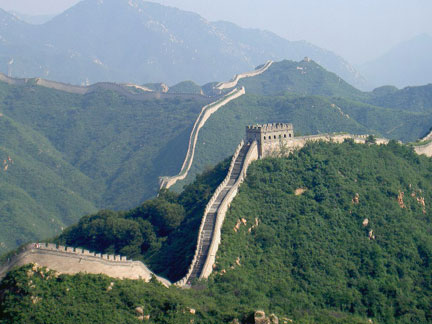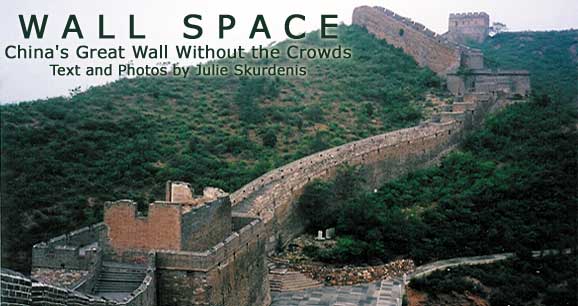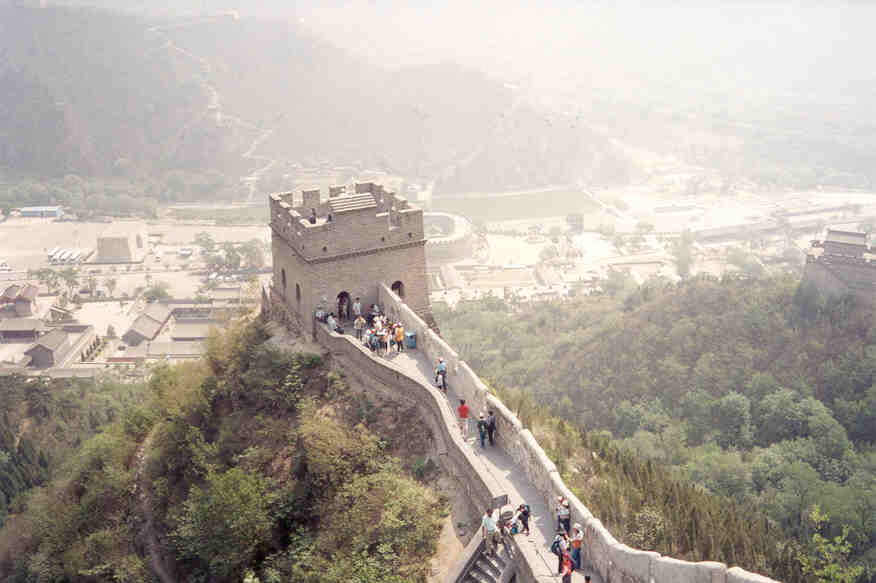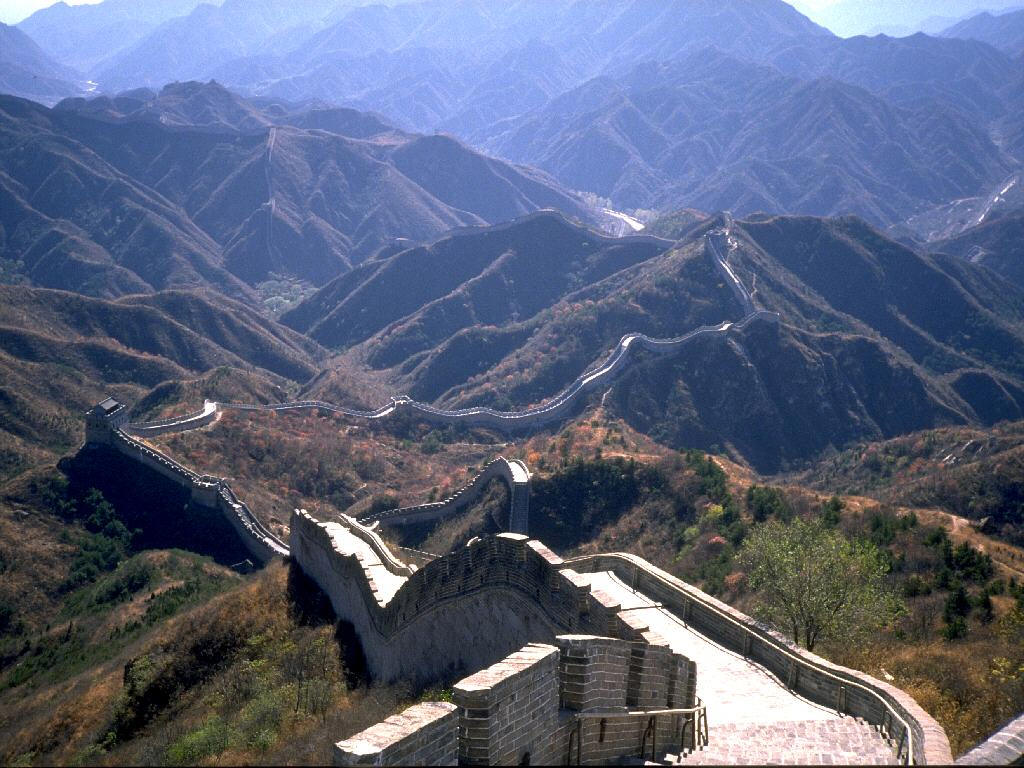| Dynasty | Wall | Period | Length (Mile) | Description |
| Warring States (476 BC-221 BC) | Wall of Qi | 685 BC -645 BC | 385 | From the bank of Yellow River to the Yellow Sea in the east |
| Wall of Chu | 656 BC | 155 | Started from the northeast of Dengzhou in Henan Province, northward via the border of Neixiang and Zhenping Counties, eastward along Funiu Mountain to the west of Ye County, and southeastward to Zhongyang Mountain in Qinyang County | |
| Wall of Yan | 334 BC | Unknown | Started from the Taihang Mountain of Hebei Province, arriving at the northeast of Xiong County via Xushui and Anxin Counties, and southward to Ziya River | |
| Wall of Qin (under the reign of King Li Gong) | 461BC | Unknown | Started from the Xiaozhang Village at the foot of Mt. Huashan in Shaanxi Province, northeastward to the bank of Weihe River, westward along the south bank of Luohe River to Pucheng County, and ended at Mt. Huanglong in Baishui County along the west bank of Luohe River | |
| Wall of Qin (under the reign of King Zhao) | Unknown | Unknown | Started from the Min County in Gansu Province, northward to the present Lintao County, reached the border area of Tianciwan Village in Jingbian County of Shaanxi Province and Liandaowan Village in Ansai County of Shaanxi Province. From here, the wall branched out into two paths.The first was built eastward along the dividing range of Dali River and Huaining River and ended at Yuhe Village in Yulin City (Shaanxi). The other turned to the north by way of Jingbian County, Yulin City to the west bank of Yellow River, south of Inner Mongolia | |
| Wall of Zhao | 300 BC | Unknown | Started from the border of Mt.Wula and Mt.Langshan, gets to the north slope of Mt. Daqing in the northwest of Hohhot via the south slope of Mt. Yinshan, Wuyuan County (Inner Mongolia) and Guyang County (Inner Mongolia) | |
| Wall of Wei (the west line) | 361 BC -352 BC | Over 62,137 | Started from Mt. Huashan in Shaanxi Province and through to the bank of the Yellow River by way of Weihe River, Dali County (Shaanxi), northward to the Heyin and Hancheng Counties (Shaanxi) | |
| Wall of Wei (the south line) | Unknown | Unknown | Started from today's Yuanyang County in Henan Province, and ended at Mixian County (Henan) via Yangwu County (Henan) and east of Zhengzhou | |
| Qin (221 BC-206 BC) | Wall of Qin (the west line) | 214 BC | 3,107 | Started from the Minxian County in Gansu Province, and ended at the south bank of the Yellow River by way of Lintao County (Gansu), Jingbian County (Shaanxi), Hengshan Mountain, Yulin City (Shaanxi) and Tuoketuo County in Inner Mongolia |
| Wall of Qin (the north line) | 214 BC | Started from the west section of Mt. Yinshan and ended at the mouth of today's Qingchuan River in North Korea by way of the north slope of Mt. Daqing, Jining County in Inner Mongolia, Zhangyi County (Hebei), Fushun and Benxi Cities (Liaoning) | ||
| Western Han (206 BC-24) | Wall of Western Han | 205 BC | 6,214 | The first emperor (Liu Bang) ordered the restoration of the Qin Wall |
| 130 BC | Emperor Wu (Liu Che) ordered restoration of the wall on a larger scale | |||
| 121 BC | The emergence of Wuwei and Jiuquan Counties. Lingjusai Great Wall, the first section of the Hexi Great Wall, started at the west bank of the Yellow River in today's Yongdeng County (Gansu Province) to the Jinta County in northern Jiuquan City along the Hexi Corridor | |||
| 127 BC | Emperor Wu ordered extension of the wall to today's Jiuquan City | |||
| 111 BC | Emperor Wu ordered extension of the wall to Yumen, which was the second section of the Hexi Great Wall | |||
| 102 BC | Emperor Wu ordered to build the wall from Yumen to Luobupo in Xinjiang, which was the third section of the Hexi Great Wall | |||
| Northern Wei (386-534) | Wall of Northern Wei | 423 | 621 | Started from the northeast of Chicheng County and ended at Mt. Yinshan via Zhangbei County (Hebei), Shangyi County (Hebei), Huade, Shangdu, Wuchuan and Guyang Counties (Inner Mongolia) |
| Northern Qi (550-577) | Wall of Northern Qi | 552 | 124 | Started from today's Lishi County (Shanxi) and ended at today's Wuzhai County (Shanxi) along Mt. Luliang |
| 555 | Over 280 | Started from Xiakou near Juyongguan Pass and ended at Hengzhou County (today's Datong County in Shanxi Province) | ||
| 556 | 932 | Started from today's Fenyang County (Shanxi) and stretched to the seashore near Shanhaiguan Pass | ||
| 557 | 124 | Started from the border of today's Daixian and Shuoxian Counties (Shanxi) and ended at the southwest of today's Lingqiu County (Shanxi) | ||
| 563 | 62 | Located at today's northwest of Jiyuan County in Henan Province | ||
| Sui (581-618) | Wall of Sui | 581-608 | 932 | Started from the bank of the Yellow River in Ningxia and zigzagged to the coast of Bohai Sea by way of Inner Mongolia, Shanxi and Hebei Provinces |
| Liao (916-1125) | Wall of Liao | 908 | Unknown | Located at today's Mt. Nanguan in today's Dalian City, Liaoning Province |
| Jin (265-420) | Ditches of Jin | 1148 | Unknown | Started from today's Genhe City in Inner Mongolia and ended at the Mt. Kente, Mongolia |
| Ming (1368-1644) | The Great Wall of Ming | 1368-1644 | 4,536 | Started from Yalu River in Liaoning Province and ended at Jiayuguan Pass in Gansu Province by way of Hebei, Tianjin, Beijing, Shanxi, Inner Mongolia, Shaanxi, and Ningxia |
The Great Wall of China, one of the greatest wonders of the world, was enlisted in the World Heritage by UNESCO in 1987. Just like a gigantic dragon, the Great Wall winds up and down across deserts, grasslands, mountains and plateaus, stretching approximately 6,700 kilometers (4,163 miles ) from east to west of China. With a history of more than 2000 years, some of the sections of the great wall are now in ruins or even entirely disappeared. However, it is still one of the most appealing attractions all around the world owing to its architectural grandeur and historical significance.
The Great Wall Construction Chronology
Pictures of Great wall of China
Pictures of Great wall of China
pictures of Great Wall of China
pictures of Great Wall of China
pictures of Great Wall of China
pictures of Great Wall of China
pictures of Great Wall of China
pictures of Great Wall of China
pictures of Great Wall of China
pictures of Great Wall of China
pictures of Great Wall of China
pictures of Great Wall of China
pictures of Great Wall of China
pictures of Great Wall of China
pictures of Great Wall of China
pictures of Great Wall of China
pictures of Great Wall of China
pictures of Great Wall of China
pictures of Great Wall of China
pictures of Great Wall of China
pictures of Great Wall of China

pictures of Great Wall of China

pictures of Great Wall of China

pictures of Great Wall of China

pictures of Great Wall of China

pictures of Great Wall of China

pictures of Great Wall of China
pictures of Great Wall of China

pictures of Great Wall of China

pictures of Great Wall of China

pictures of Great Wall of China

pictures of Great Wall of China

pictures of Great Wall of China

pictures of Great Wall of China

pictures of Great Wall of China

pictures of Great Wall of China

pictures of Great Wall of China

pictures of Great Wall of China

About: Great Wall of China
Picture of Great Wall
The Great Wall of China, one of the greatest wonders of the world, was enlisted in the World Heritage by UNESCO in 1987. Just like a gigantic dragon, the Great Wall winds up and down across deserts, grasslands, mountains and plateaus, stretching approximately 6,700 kilometers (4,163 miles ) from east to west of China. With a history of more than 2000 years, some of the sections of the great wall are now in ruins or even entirely disappeared. However, it is still one of the most appealing attractions all around the world owing to its architectural grandeur and historical significance.

Great Wall of China

Great Wall of China

Great Wall of China
Great Wall of China

Great Wall of China

Great Wall of China


The Great Wall of China, one of the greatest wonders of the world, was enlisted in the World Heritage by UNESCO in 1987. Just like a gigantic dragon, the Great Wall winds up and down across deserts, grasslands, mountains and plateaus, stretching approximately 6,700 kilometers (4,163 miles ) from east to west of China. With a history of more than 2000 years, some of the sections of the great wall are now in ruins or even entirely disappeared. However, it is still one of the most appealing attractions all around the world owing to its architectural grandeur and historical significance.
- History: Excitement abounds in the origin, vicissitude and nature of the great wall of the Qin, Han, and Ming dynasties.
The Great Wall was originally built in the Spring, Autumn, and Warring States Periods as a defensive fortification by the three states: Yan, Zhao and Qin. The Great Wall went through constant extensions and repairs in later dynasties. In fact, it began as independent walls for different states when it was first built, and did not become the "Great" wall until the Qin Dynasty. Emperor Qin Shihuang succeeded in his effort to have the walls joined together to fend off the invasions from the Huns in the north after the unification of China. Since then, the Great Wall has served as a monument of the Chinese nation throughout history. A visit to the Great Wall is like a tour through the history backwards; it brings tourists great excitement in each step of the wall. - Construction: The mystery of the construction of the wall is amazing.
The construction of the Great Wall, drew heavily on the local resources for construction materials, was carried out in line with the local conditions under the management of contract and responsibility system. A great army of manpower, composed of soldiers, prisoners, and local people, built the wall. The construction result demonstrates the manifestation of the wisdom and tenacity of the Chinese people. - Sections: Ready to show you an incredible diversity of scenery and ethnic people along its way.
The Great Wall as we see today was mostly built during the Ming Dynasty. It starts from Shanhaiguan Pass in the east to Jiayuguan Pass in the west traversing provinces of Liaoning, Hebei, Beijing, Tianjin, Shanxi, Inner Mongolia, Ningxia, Shaanxi and Gansu. - Protection:The China Great Wall Academy has called for greater protection of this important relic.
Following a forty-five day long survey of 101 sections of the Wall in different provinces, the China Great Wall Academy reported on December 12, 2002 that the forces of nature and destruction at the hand of mankind are bringing about the gradual reduction of its extent with the result that less than 30% remains in good condition. The Academy has called for greater protection of this important relic. - Culture:Unfolding a considerable part of Chinese culture beyond the wall.
The Great Wall has long been incorporated into Chinese mythology and popular symbolism. The most beautiful of several legends is about the collapse of a section of the Great Wall caused by Meng Jiangnu, who cried bitterly over the death of her husband in the construction of the Great Wall. This legend has been spread widely through textbooks, folk songs and traditional operas. It is well-known in China. - Travel of the wall: Make a trip to at least one section of the Great Wall should be a must for your China Trip. Elaborate tour plans make travel comfortable, memorable, enjoyable and informative. See details of our Memorable Highlights Tours.
If you prefer to see the wall in a relatively natural state, visit Simatai, 110km north-east of Beijing. This part of the Wall is the best choice, for it is still in its original state without being developed into a popular tourist attraction due to its distance and little public transportation options.
more about the great wall of China
Great Wall of China
Great Wall of China

Great Wall of China

Great Wall of China

Great Wall of China

Great Wall of China

Great Wall of China

Subscribe to:
Posts (Atom)